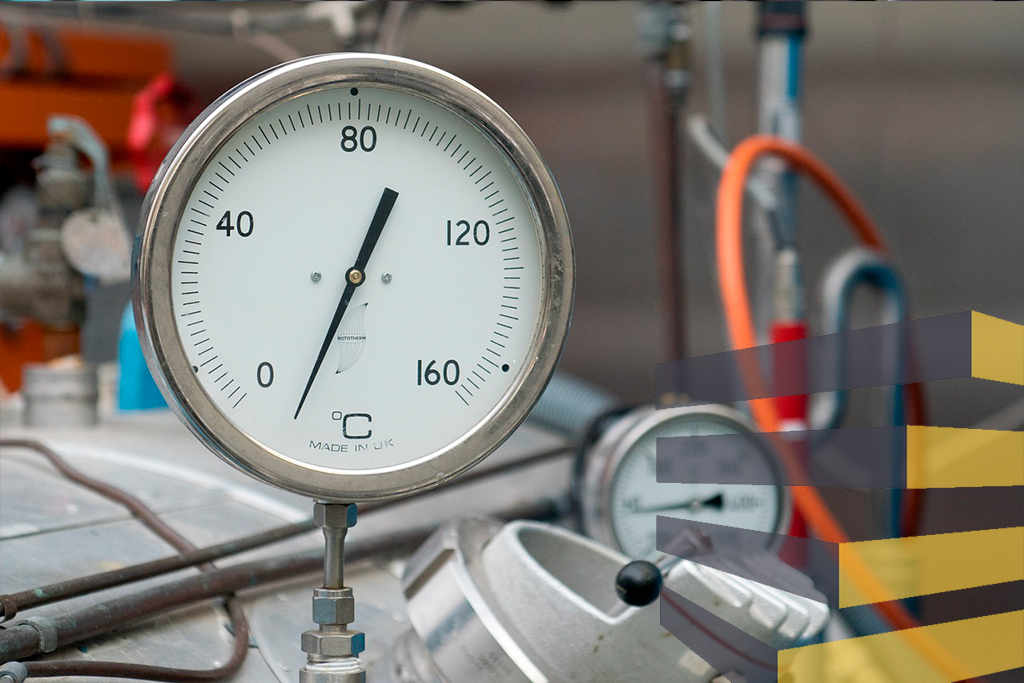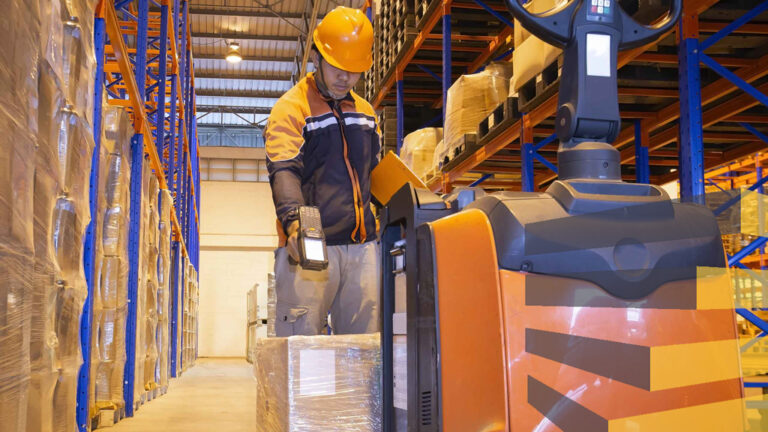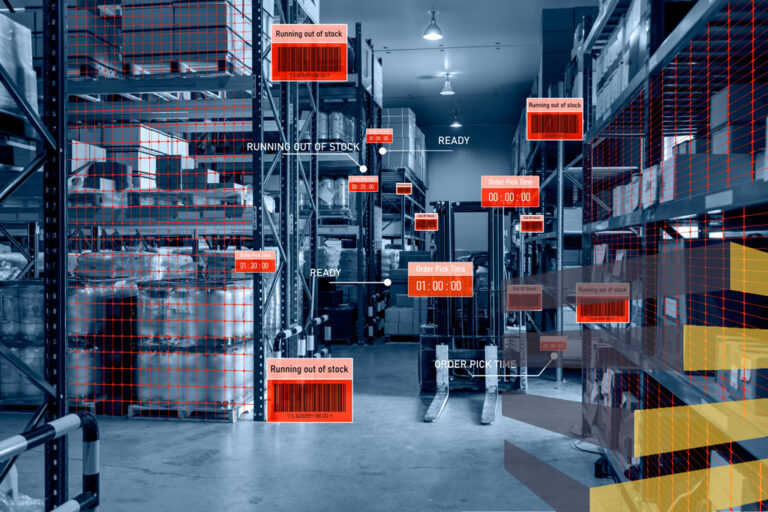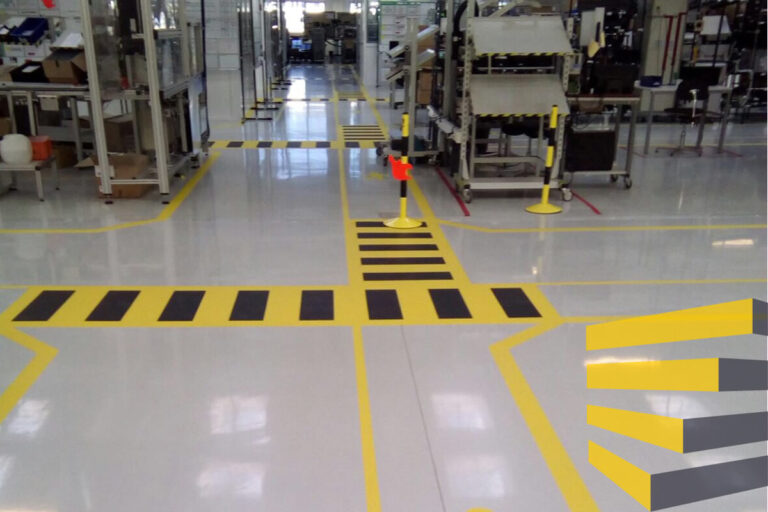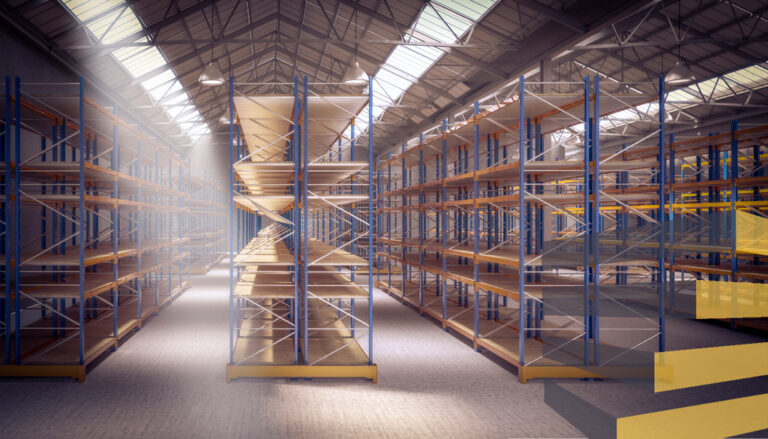Table of Contents
A cold storage warehouse is a building used to safely keep products at controlled and cooled temperatures. Those temperatures are achieved by careful insulation and efficient cooling systems, and a cold storage warehouse uses a range of components to maintain smooth operations.
Companies have to be ready to properly handle and preserve goods, while also ensuring that all processes of distribution are carried out precisely. Breaking from the correct temperatures at any moment can lead to deterioration, loss of material, and even health hazards.
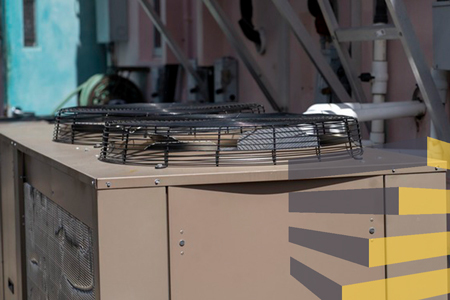
These warehouses play a vital role in the supply chain, ensuring that perishable goods retain their quality and freshness throughout the storage period. They provide secure conditions, shielding goods from external factors like contamination and temperature fluctuations.
At Serviap Logistics, we support companies with the setup, refit, and relocation of warehouses and distribution centers in Brazil, Mexico, and the United States. So if you need assistance with a cold storage warehouse, contact us to learn more.
The cold storage market
The global cold chain market has been seeing continuous growth. It is expected to grow a further 18.6% up to 2030, according to Grand Review Research. This increase is linked to many new consuming habits worldwide, especially the rapid expansion of e-commerce.
Specific industries that require cold storage warehousing include agricultural producers, supermarkets, and pharmaceutical institutions. Additionally, the rising popularity of ready-to-go, prepackaged food sold online is one more trend that has pushed this market. In 2022, North America ensured the largest revenue share and is expected to keep its dominant position in this market for the foreseeable future.
The demand for refrigerated facilities is primarily propelled by proximity to population centers, population growth, as well as evolving consumer preferences. Hence, the strategic location plays a crucial role when selecting a cold storage warehouse. To optimize efficiency, the most favorable facility should be near the production site and easily accessible to distribution points.
Cold storage warehouse: 5 key considerations
Many challenges involving cold storage warehousing can be overcome by proper planning, organizing, and managing. Here are some critical concerns to take into consideration.
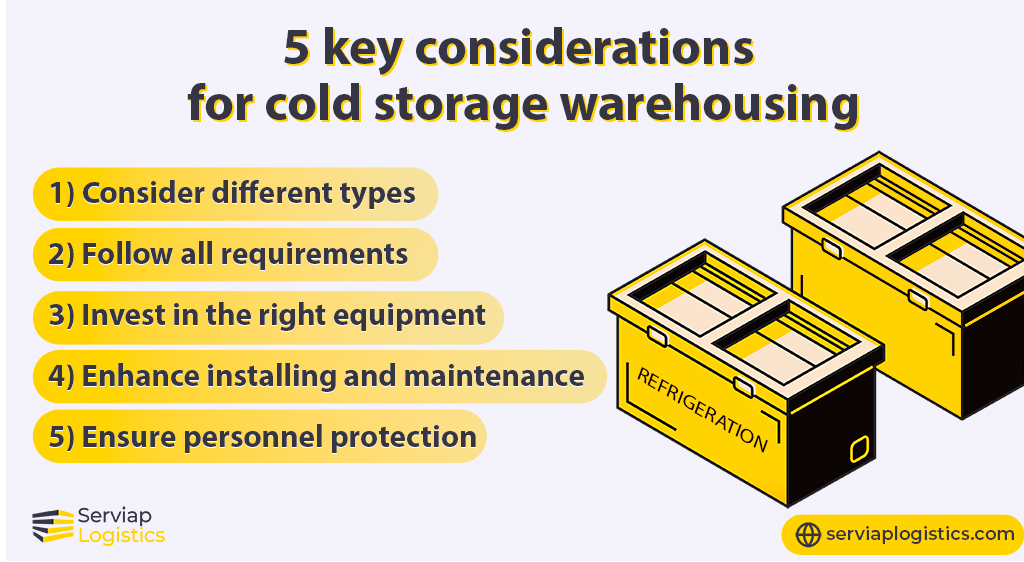
1) Consider different types of cold storage warehouse
There are two main variations of the cold storage warehouse. Refrigerated facilities are deposits where items such as fruits and vegetables can be preserved at cold temperatures, but are not frozen. Then, freezer cold storage is ideal for products that must stay frozen during distribution, which require more specific equipment and can store a range of items from meat to very sensitive pharmaceuticals.
Other items that may require a cold storage warehouse include cosmestics, chemicals, specialized components, or even craft products. There are also goods such as vaccines and biological specimens that need the utmost precision with ultra-low temperature storage and backup cooling systems with carbon dioxide and liquid nitrogen.
Larger companies can own private cold storage warehouses, but it is also common for businesses to operate in public spaces owned by third-party logistics companies. A cheaper option can be achieved with refrigerated containers, where you store limited amounts of products at reduced costs.
2) Guarantee all requirements are followed
In a cold storage warehouse, there are extra safety stipulations that must be respected. In the USA, facilities must comply with the regulations on refrigerated warehousing by the OSHA certification. Depending on the type of goods that are stored, you may also need to follow SQF safety protocol, and the HACCP system to avoid hazards. Managers should always be aware of the responsible institutions in the regions they operate.
Some of the most important requirements concern the temperature of the space. For refrigerated warehouses, the controlled temperature should be at 0 to 10 °C. Then, for standard frozen deposits, the temperature has to be somewhere from 0 to -30°C. Biological and other special products may require even more extreme temperature control down to as far as -85°C.
As for construction and infrastructure, many design elements are necessary for a cold storage warehouse. The electrical setup should have standby generators in case of power loss. Floors, roofs, and walls should be thick enough to properly isolate temperatures. Suspended ceilings have to be designed at strategic places so that water buildups can be removed from drainage points.
3) Invest in the right equipment and machinery
Choosing the right equipment is crucial to increase the shelf life of products and preserve them. Drive-in and mobile racking are two common options for optimizing storage in cold storage warehouse floors and facilitating the moving of goods. Furthermore, you can invest in automated systems for refrigerators and deep freezers, as they will reduce human labor greatly.
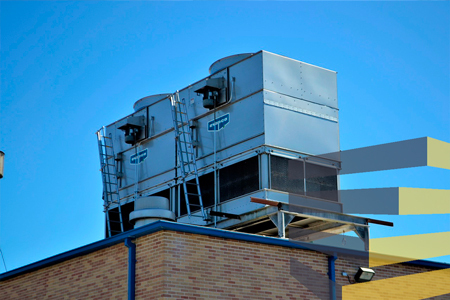
The air in a cold storage warehouse is also a concern. Blower fans are usually installed to ensure ventilation while maintaining the needed temperature. Dehumidifiers are used to reduce ice formation and help with air quality. In some cases, you might need to build airlock system spaces in between room areas to minimize condensation and cold loss.
These facilities require many different machineries to be functioning at all times, which means higher energy consumption. It may be necessary to investigate warehouse sustainability ideas such as energy-efficient technologies like LED lighting and smart HVAC systems. Additionally, adopt renewable energy sources like solar panels or wind turbines.
4) Enhance installing and maintenance
A cold storage warehouse can easily become more expensive than average facilities, so proper installation and maintenance will avoid extra costs. Optimizing the space is a great start to reaching better cost efficiency. If you plan the best racking assembly, you can maximize storage without compromising the flow of operations.
Organizing the floor is key to preserving products, equipment, and infrastructure. For the cold storage warehouse space, you may need to apply specific signage, protection barriers, and floor marking tape types that are resistant to lower temperatures, so they will not deteriorate easily and can secure efficiency for longer periods.
It is also advisable to count on a warehouse setup consultant to assist you and supervise the operation. Remember that any malfunction in machinery or improper installation can cause irreversible damage to goods. Experts can help you keep your budget under control, as well as avoid potential safety risks and other major problems.
5) Ensure personnel protection
The staff of a cold storage warehouse needs to be managed with adequate attention. Proper automated systems are very important to save time in operations and reduce exposure to cold temperatures. Automation also minimizes human error, which can have an even bigger impact in sub-zero temperatures.
Employers must wear adequate clothing, like thermal pants, lined jackets, and anti-slipping boots. In some areas of a cold storage warehouse, they might need to wear gloves and other accessories that can compromise mobility. So, equipment has to be adapted and devices should be user-friendly, as workers can’t lose time when walking in and out of freezer areas.
Additionally, personnel training in a cold storage warehouse will present extra steps when compared to ambient temperature facilities. These warehouses require more rigorous safety routines, so workers must be well aware of protocols in order to mitigate problems. They should also be clearly informed of the conditions they will be working on since the hiring and onboarding process.
Serviap Logistics can assist you with cold storage warehousing
At Serviap Logistics, we offer you project management services that range from planning a new facility to remodeling or relocating your business from start to finish. Our services include labeling, floor marking, signage, collision protection, and more.
So count on us if you’re looking to set up an efficient cold storage warehouse. We have extensive knowledge and network to help you reach your goals in an easier and faster way, always ensuring compliance with the strictest safety standards.
Our customers come from various sectors in Brazil, Mexico, and the US. Our plan is to maintain trustful collaborations and keep expanding together through the excellence of our services.
Contact us to learn more about how we can assist you.



